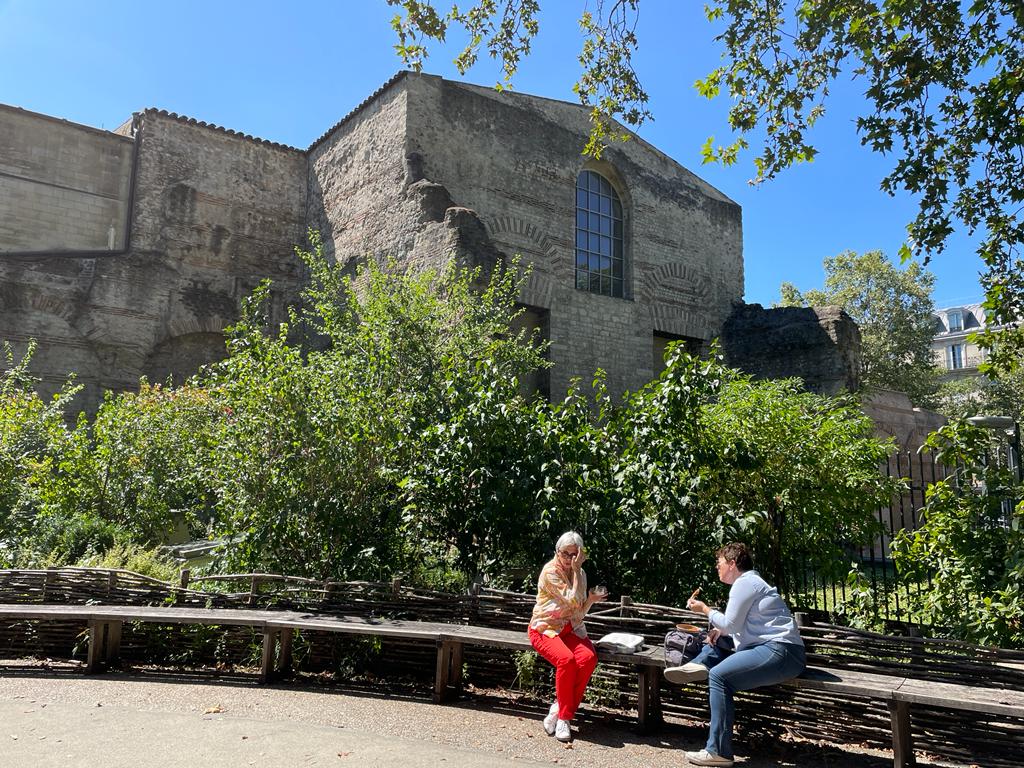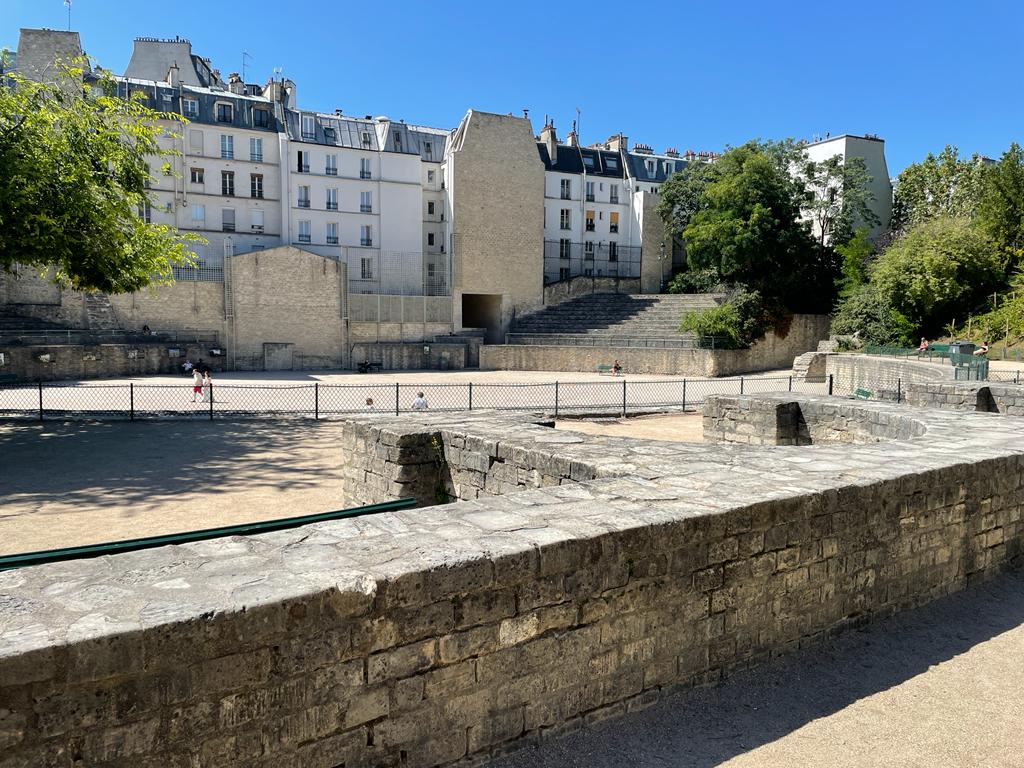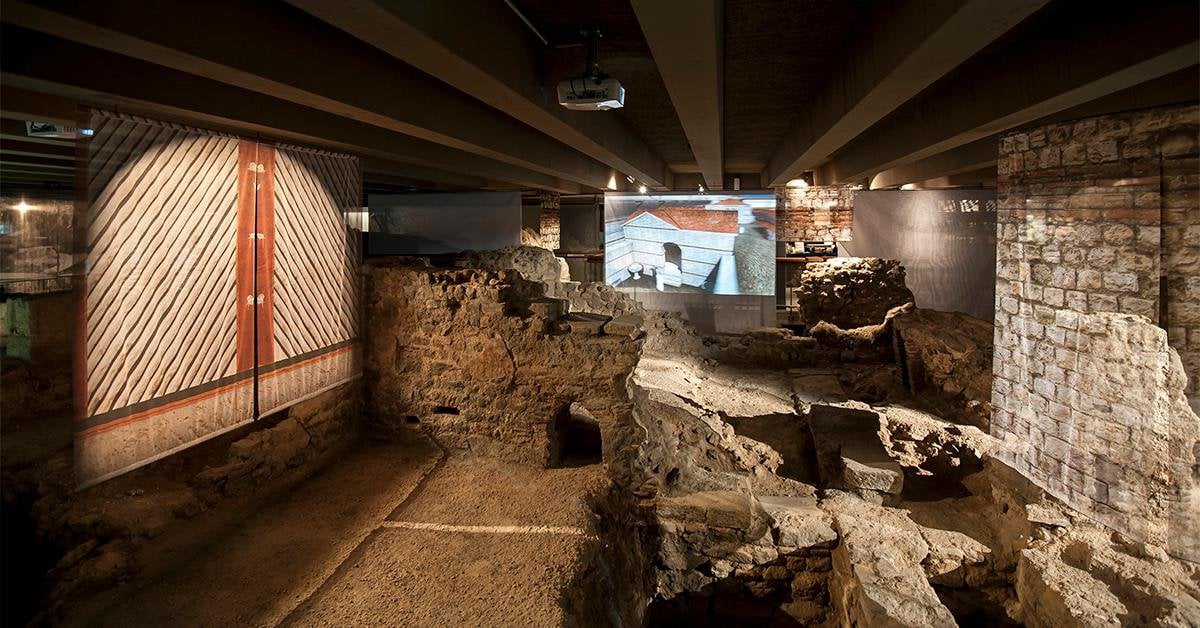The history of the city of Paris begins with the small Roman settlement of Lutetia (Lutèce in French) which was built on the hill that now houses the Pantheon the Montagne Sainte-Geneviève in the first century BC. Later in the Roman period the settlement relocated across the Seine to the Île de la Cité.
Paris today has very little left to remind us of its Roman past . However, there are still some signs of the ancient city hidden in the Paris we know today. We’ve put together this list of the ruins around the city that you are still able to visit.

Roman Baths
The ruins of the city’s roman baths can be found at the Musée de Cluny, although the museum itself is largely dedicated to the medieval period. Known as the Thermes de Cluny in French, they constitute about one-third of a massive bath complex that is believed to have been constructed around the beginning of the 3rd century. The best preserved room is the frigidarium, with intact architectural elements such as Gallo-Roman vaults, ribs and consoles, and fragments of original decorative wall painting and mosaics. While you’re there check out the rest of the museum, you might be inspired to search for more of medieval Paris.

Arènes de Lutèce
In the 5th arrondissement by the metro stop Place de Monge, you can find the Arènes de Lutèce (Arenas of Lutetia). These listed monuments, built between the 1st and 2nd century, were able to hold up to 15,000 people. Visitors can still see the site where the actors stood, the stage platform and lapidary parts. Today they make up part of the Place Emile Mâle, and are a popular spot for relaxing or playing football or boules on a sunny day.
The City Walls
It was in the later Roman period, after a barbarian invasion in 285AD, that many of the residents of Lutetia moved across the Seine to Île de la Cité, destroying the bridges behind them. At that time, ramparts were constructed about 7 feet high. Today, only the outline of a small section of the Roman wall can be seen at 5 Rue de la Colombe and there’s a historic plaque on the wall to mark the place.

Remains of the archaeological crypt of Ile de la Cité © Pierre Antoine
Archaeological Crypt
Beneath the Notre-Dame Cathedral square lies the archaeological crypt of Paris containing the foundations and vestiges of buildings dating from the Gallo-Roman era through to the 18th century. These remains were discovered during excavations from 1965 to 1972, and were made open to to the public in 1980. The crypt offers a unique look at the urban and architectural evolution of the Île de la Cité.
Remnants of Ancient Aqueducts
You can find a piece of the old Roman aqueduct at 42 Avenue Reille, 75014 Paris, which was discovered and dug up during construction work in the area.
To learn more about the history of Paris, head to the Musée Carnavalet
